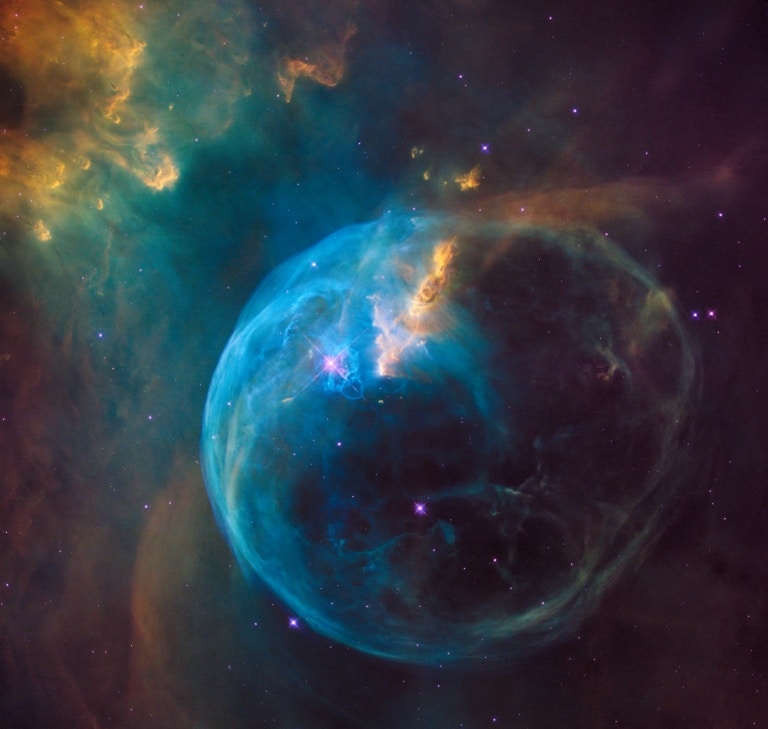When Machines Dream: How AI Is Revolutionizing Our Search for Cosmic Signals

Hey, Chad here. If you’re the kind of person who’s ever stared up at the night sky and wondered what’s out there—or if you’re just obsessed with the latest in AI—strap in. Today, we’re diving into how artificial intelligence is not just changing the way we look at the cosmos, but actively dreaming up bizarre, brilliant new tools to help us listen to the universe in ways humans never could.

Photo by NASA on Unsplash
The Cosmic Symphony: Why We Listen to Space
Let’s get one thing straight: the universe is loud. Not in the way your neighbor’s dog is loud, but in a symphony of radio waves, gravitational ripples, and cosmic background hums. For decades, scientists have been building ever-more sensitive instruments to pick up these signals—think radio telescopes, laser interferometers, and giant arrays scattered across remote deserts.
But here’s the kicker: the signals we’re searching for are often buried in so much noise that even the best human-designed tools struggle to pick them out. Enter AI, stage left.
When Machines Dream: AI as Cosmic Inventor
AI isn’t just crunching data anymore. Thanks to advances in generative design, neural networks, and reinforcement learning, artificial intelligence is now dreaming up entirely new ways to listen to the cosmos—tools and techniques that defy traditional engineering logic.
Picture this: instead of a human engineer painstakingly tweaking a radio antenna, you have an AI system that runs millions of simulations, evolving wild new detector designs that look nothing like what’s come before. Some of these designs are so strange that, at first glance, they seem more like alien artifacts than scientific instruments.
Real-World Examples: From Sci-Fi to Science
Let’s talk specifics. AI-driven design is already making waves in several areas of astronomy and astrophysics:
- Radio Astronomy: AI algorithms are optimizing the arrangement of antenna arrays to maximize sensitivity and reduce interference. The result? Telescopes that can pick up fainter signals from deeper in space than ever before.
- Gravitational Wave Detection: Neural networks are being used to sift through mountains of data from detectors like LIGO, identifying the subtle ripples in spacetime caused by colliding black holes and neutron stars.
- SETI (Search for Extraterrestrial Intelligence): Machine learning models are helping scientists scan for patterns in radio signals that might indicate the presence of alien technology—patterns that would be nearly impossible for humans to spot unaided.
But the real magic happens when AI is tasked with designing the hardware itself. We’re talking about antennas with fractal shapes, sensors inspired by biological systems, and even hybrid devices that combine optical, radio, and quantum detection methods—all dreamed up by algorithms with zero preconceptions.
The AI Design Process: Evolution on Steroids
So how does AI actually design these tools? The process borrows from nature. Using techniques like evolutionary algorithms, AI systems start with a population of random designs and “breed” them over thousands of generations, selecting for the ones that perform best at picking up cosmic signals. The results can be mind-bending: designs that no human would ever sketch on a napkin, but which outperform traditional instruments by leaps and bounds.
This approach isn’t just theoretical. NASA and other research agencies are already experimenting with AI-generated components for future space missions. Imagine a space probe equipped with sensors that evolved in silico, perfectly tuned to pick up the faintest whispers from the edge of the universe.
Why AI-Designed Tools Matter
Here’s why this matters: The universe is vast, weird, and full of surprises. The signals we’re searching for—whether from distant galaxies, black holes, or hypothetical alien civilizations—are often so faint and so different from anything we’ve encountered that our old-school tools just aren’t cutting it anymore.
AI-designed instruments can adapt to new challenges, uncover hidden patterns, and even suggest entirely new ways of listening that we haven’t thought of. In a sense, when machines dream, they expand the boundaries of human curiosity.
The Future: Human-AI Collaboration in Cosmic Discovery
Don’t worry, we’re not handing the keys to the universe over to the machines just yet. The most exciting breakthroughs are happening at the intersection of human creativity and AI ingenuity. Scientists are learning to interpret and refine AI-generated designs, turning them into real-world instruments that push the limits of what’s possible.
As AI continues to evolve, expect to see even stranger, more powerful tools emerging—tools that may one day help us answer some of the biggest questions in science: Are we alone? What is the nature of dark matter? How did the universe begin?
Final Thoughts: The Next Frontier
If you’re building AI apps, running your own server, or just geeking out over the latest cosmic discoveries, this is the moment to pay attention. The AI revolution isn’t just about smarter chatbots or self-driving cars—it’s about unlocking entirely new ways of exploring reality itself.
So the next time you hear about a weird new telescope or a sensor that looks like it came out of a sci-fi movie, remember: it might just be the product of a machine’s dream.
2 Comments
Comments are closed.


So now we’re letting AI design our space gadgets? Next thing you know, the telescopes will be asking us for a raise.
Love how we’re trusting machines to find aliens when I can’t even get my smart speaker to understand me half the time. Progress, I guess?